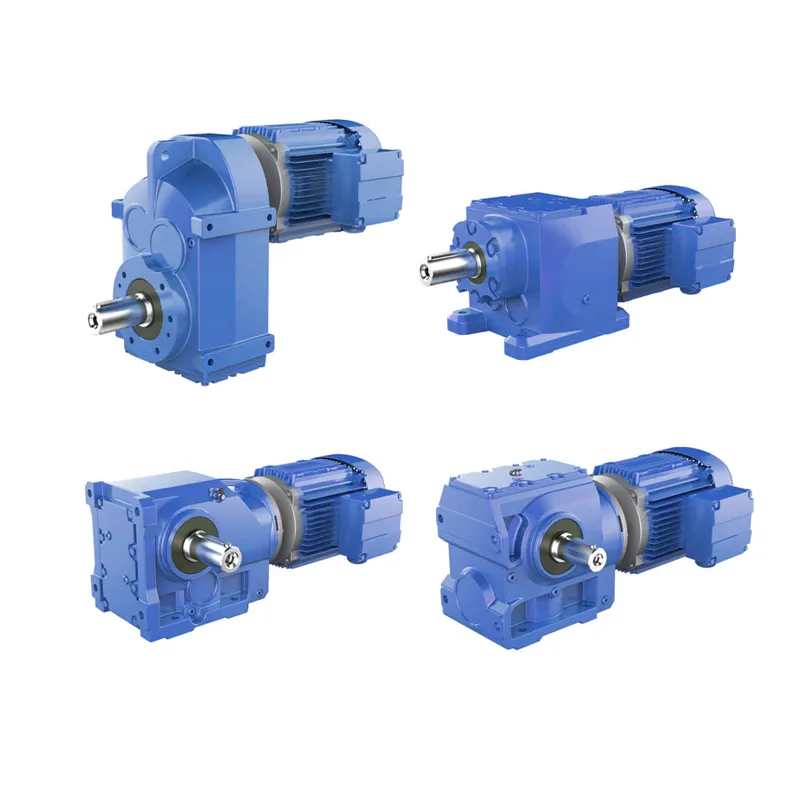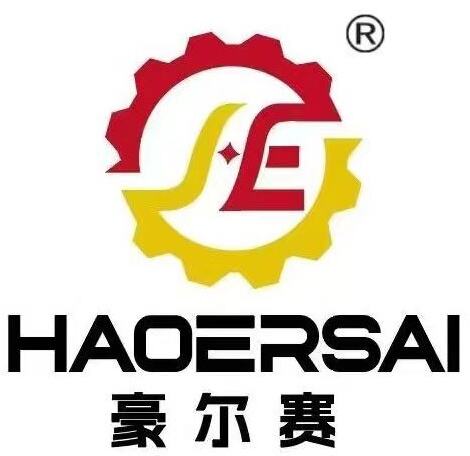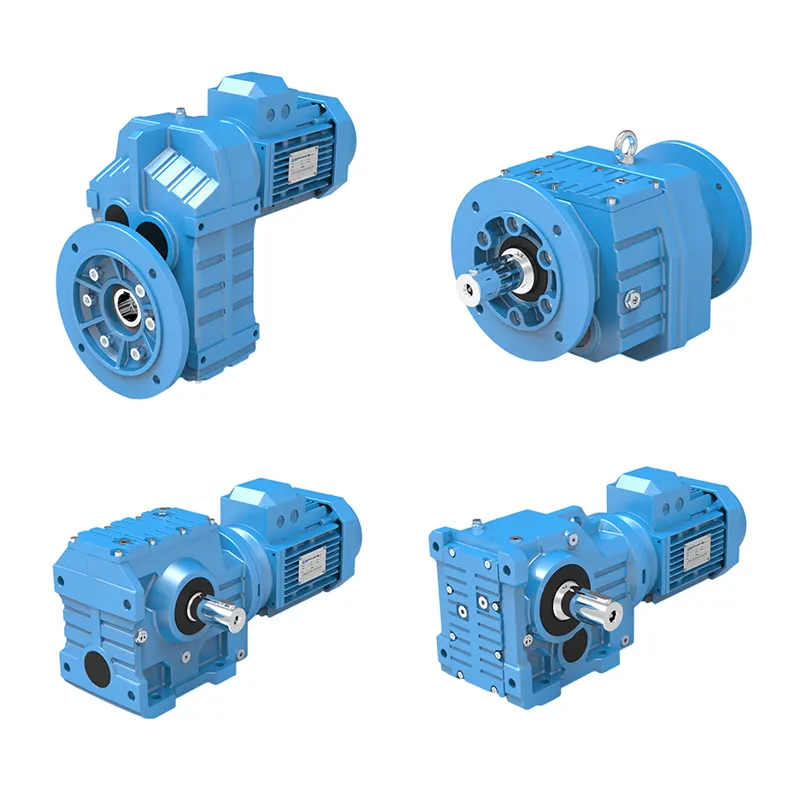Understanding the Power of Helical Gear Reducers in Industrial Applications
In the realm of power transmission and industrial machinery, helical gear reducers have emerged as the go-to solution for applications demanding high torque and precision. These sophisticated mechanical devices utilize uniquely designed teeth that mesh at an angle, creating a gradual and smooth power transfer that sets them apart from conventional gear systems. The increasing adoption of helical gear reducers across various industries has revolutionized how we approach challenging mechanical applications, particularly those requiring substantial torque output.
The engineering marvel behind helical gear reducers lies in their ability to distribute load across multiple teeth simultaneously, ensuring superior performance and reliability in demanding industrial environments. This distinctive characteristic has made them indispensable in everything from heavy manufacturing to precision equipment, where consistent power transmission is crucial for operational success.
Core Design Principles of Helical Gear Reducers
Geometric Configuration and Load Distribution
The fundamental design of helical gear reducers incorporates teeth cut at an angle to the axis of rotation, creating a helical pattern that resembles a screw thread. This angled engagement allows for a larger contact ratio between mating teeth, resulting in smoother operation and reduced noise compared to straight-cut gears. The helical design ensures that load transfer occurs gradually, with multiple teeth sharing the burden at any given moment.
This superior load distribution capability of helical gear reducers significantly reduces wear and extends the operational lifespan of the system. The angled teeth configuration also helps in minimizing backlash, which is crucial for applications requiring precise positioning and movement control.
Material Selection and Manufacturing Precision
The effectiveness of helical gear reducers heavily depends on the materials used in their construction and the precision of their manufacturing process. High-grade steel alloys, typically case-hardened or through-hardened, are commonly employed to ensure optimal strength and durability. The gear teeth undergo meticulous heat treatment processes to achieve the required surface hardness while maintaining core ductility.
Advanced manufacturing techniques, including CNC machining and precision grinding, ensure that helical gear reducers meet strict tolerance requirements. This manufacturing precision is essential for maintaining proper tooth engagement and achieving the desired reduction ratios while minimizing power losses through friction.

Performance Advantages in High-Torque Scenarios
Enhanced Power Transmission Efficiency
One of the primary reasons helical gear reducers excel in high-torque applications is their superior power transmission efficiency. The gradual engagement of the helical teeth allows for smoother power transfer, resulting in efficiency ratings typically exceeding 95%. This high efficiency translates to reduced power losses and lower operating temperatures, making helical gear reducers particularly suitable for continuous-duty applications.
The efficient power transmission characteristics of helical gear reducers also contribute to reduced energy consumption, making them an environmentally conscious choice for industrial applications. The smooth operation results in minimal vibration and noise, creating a more comfortable working environment while reducing stress on connected equipment.
Torque Multiplication and Speed Reduction
Helical gear reducers excel at providing substantial torque multiplication while achieving precise speed reduction ratios. The helical tooth design allows for higher reduction ratios in a more compact package compared to other gear types. This ability to generate high torque output from a relatively small input makes them ideal for applications where space is at a premium but power requirements are substantial.
The versatility of helical gear reducers in handling various reduction ratios enables engineers to optimize system design for specific application requirements. Whether the application demands high-speed reduction or massive torque multiplication, helical gear reducers can be configured to meet these diverse needs efficiently.
Industrial Applications and Implementation
Heavy Manufacturing Equipment
In heavy manufacturing environments, helical gear reducers prove invaluable in conveyor systems, crushing equipment, and material handling machinery. Their robust construction and ability to handle sudden load changes make them perfect for these demanding applications. The consistent torque output and reliable operation ensure minimal downtime and maintenance requirements.
Manufacturing facilities particularly benefit from the low-noise operation of helical gear reducers, as they contribute to a better working environment while maintaining the power and precision needed for heavy-duty operations. Their excellent shock load capacity also makes them suitable for applications with frequent starts and stops.
Precision Machinery and Automation
The precision control capabilities of helical gear reducers make them essential components in automated manufacturing systems and robotic applications. Their minimal backlash characteristics ensure accurate positioning and smooth movement, critical for maintaining product quality and operational efficiency in automated processes.
In precision machinery applications, the reliability and consistency of helical gear reducers contribute to improved product quality and reduced scrap rates. Their ability to maintain accurate speed control and position helps achieve tight manufacturing tolerances and consistent output.
Maintenance and Longevity Considerations
Preventive Maintenance Strategies
To maximize the service life of helical gear reducers, implementing a comprehensive preventive maintenance program is essential. Regular oil analysis, temperature monitoring, and vibration analysis help identify potential issues before they lead to failure. Proper lubrication is particularly crucial, as it directly affects the efficiency and longevity of the gear system.
Establishing a regular inspection schedule helps maintain optimal performance and prevents unexpected downtime. This includes checking for proper alignment, unusual noise or vibration, and monitoring oil quality and level. Early detection of potential issues allows for planned maintenance rather than emergency repairs.
Optimization and Troubleshooting
Optimizing helical gear reducer performance requires attention to installation alignment, operating conditions, and load characteristics. Proper alignment during installation is crucial for achieving maximum efficiency and minimizing wear. Regular monitoring of operating parameters helps identify opportunities for optimization and potential areas of concern.
When troubleshooting issues with helical gear reducers, a systematic approach focusing on common failure modes and their indicators helps quickly identify and resolve problems. Understanding the relationship between operating conditions and gear reducer performance is key to maintaining optimal operation and extending service life.
Frequently Asked Questions
How do helical gear reducers compare to other gear types in terms of efficiency?
Helical gear reducers typically offer higher efficiency rates compared to worm gears and other conventional gear types, with efficiency ratings often exceeding 95%. Their angled tooth design enables smoother power transmission and reduced friction losses, resulting in superior performance in high-torque applications.
What are the key maintenance requirements for helical gear reducers?
Regular maintenance of helical gear reducers includes monitoring oil levels and quality, checking for proper alignment, conducting vibration analysis, and performing periodic inspections for wear or damage. Proper lubrication is crucial, and oil should be changed according to manufacturer recommendations and operating conditions.
What factors should be considered when selecting a helical gear reducer?
When selecting a helical gear reducer, consider factors such as required torque output, speed reduction ratio, operating environment, duty cycle, and space constraints. Additional considerations include maintenance accessibility, thermal requirements, and the specific demands of the application to ensure optimal performance and longevity.

